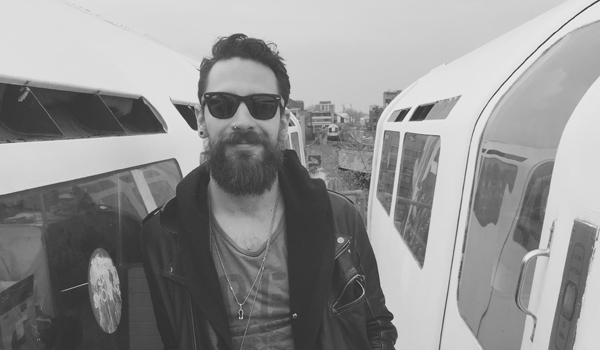London is a lonely city, we’re told repeatedly. Despite many restaurants and bars insisting they’re ‘neighbourhood bars’ and ‘neighbourhood restaurants,’ lots of us still find London a challenging place to simply hang out with others and kick back.
The 2018 answer to solving London’s seemingly unsolvable crisis of community is the rebirth of the community centre. There’s the London LGBT+ Centre, soon-to-launch, and the Hackney Arts Centre (HAC), a new multi-functional arts space in Dalston which has repurposed an abandoned Art Deco cinema from the Thirties.
The restoration and redesign of what is to become HAC is a project that has been brought to life by the team behind Village Underground, the much loved Shoreditch cultural institution known for its commitment to experimental and innovative performance and art. Similar to Village Underground, HAC will be curated to span art forms and diverse genres and voices.
Creative Director of Village Underground and Hackney Arts Centre Jorge Nieto tells Run Riot that “all great art centres have communities in their DNA,” and his goal is to draw communities together, to create a safe and inclusive arts hub in the centre of Dalston with a wide and ambitious schedule which celebrates all artistry.
“Music and raving doesn’t have to mean late hours or anti-social behaviour,” Jorge tells us in this inspired and revealing interview as he riffs on his hopes for the venue hosting experimental afternoon sets with famous artists.
From a room that was “dark, full of trash, and pigeon carcasses” to Hackney’s burgeoning new creative hub, Jorge believes the new Hackney Council licensing which sees new venues being forced to close at midnight could restrict the way new creative projects see the light. There needs to be more of a dialogue and protection for independent initiatives.
Hi Jorge. Can you describe how you felt when you first stepped into the derelict space that is set to become the Hackney Arts Centre?
It was extremely exciting and stressful at the same time. We had been looking for a new space for a while and so far, all the places we looked into were just not right. They were far away, had short leases, didn’t have the capacity we needed or simply did not fit our needs as an organization to grow.
When we came in it was totally dark and full of trash, pigeon carcases – anything you can imagine. It smelled awful, with piled up chairs and tables full of dust. It was unbelievable to discover how this theatre had been gathering dust hidden in plain sight for almost 40-years. I have to say in a way I was glad the place was a dump and such a secret as it preserved it from being turned into something else that was not used for the arts – it was almost like it was there sat as a secret waiting for the right hands.
I remember posting a picture of just a bunch of chairs and mess that said, “The future of London is a dump”. That was March 16 2016. We immediately started a long process of getting together the business plan and acquiring the lease and the permits, a process that was very stressful as we had to keep quiet about this gem we had found.
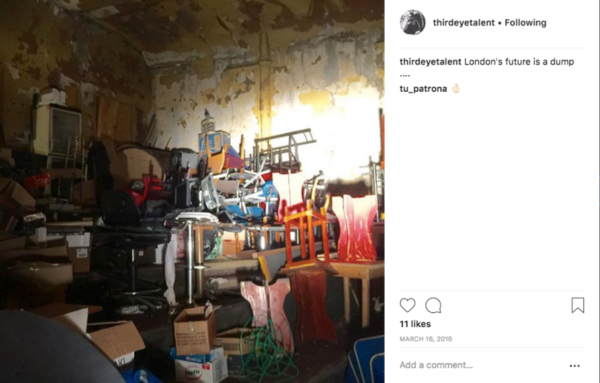
Did you decide to refurbish the building immediately?
The decision still feels overwhelming to be honest, it’s a big undertaking but we are confident in the impact the HAC will have on the area and in east London specifically. We immediately wanted to preserve the theatre as much as possible as it’s a beautiful cinema from its time and it has an amazing vibe to it; the derelict aspect gives it a majestic feeling from old times mixed with the new days. That decision was instant, the details on how came later as we created a team of project managers, builders, and designers to help us achieve it under very strict time and budget constraints.
Downstairs and in the restaurant, we needed to renovate a bit more as the rooms had been totally changed and turned into a wedding space. In the concert hall the focus is to make it sound as good as possible and the restaurant is to have a meeting place for the area: a place where people can come and work, have dinner, do meetings, dates, spend some time before the gig. Or just come and listen to carefully curated playlists or music selectors.
Can you describe some of the most well-kept and impressive features inside the building?
Well the theatre itself is beautiful. My favourite feature is the skylight that we are restoring with stained glass. When the sun is out, the place looks epic, it reminds me of a church with natural light inundating the space. Even without the glass the light shining through it is astonishing. The ceiling also has plaster designs from 1936 with shapes of animals which transport you to another era, the details are spectacular.
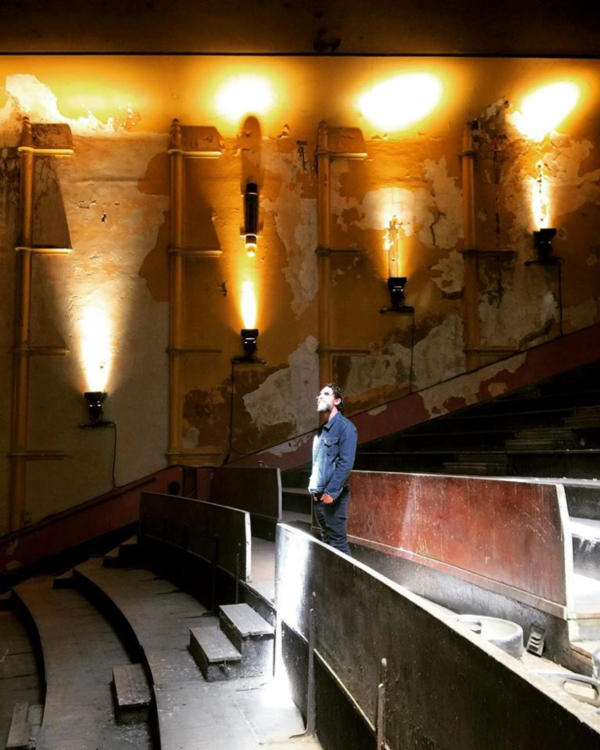
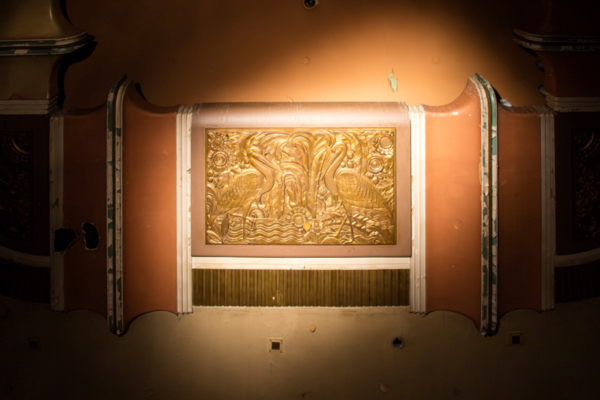
We also found a small derelict recording studio in the basement. When the time comes it will be restored and fully functional for community music projects and a radio station.
Another favourite part is the projection room. It has beautiful parquet floors and blue tiling and has an amazing old sign for the projector operator from back in the day that reads: “Is your sound level high enough, it’s essential to make sure that your patrons hear”. Something you do not hear these days in any space.
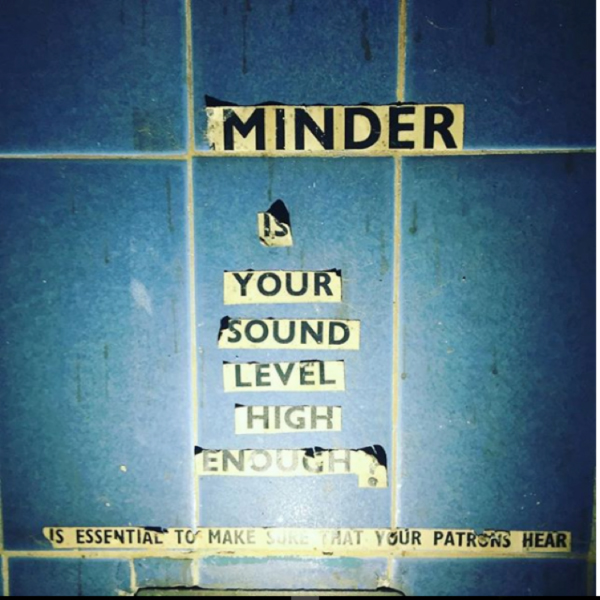
We have also found a lot of rooms and special places that are still secret and that we will reveal bit by bit. The project is so immense that we will do it in stages and reveal secrets as time goes by.
There is a debate around whether we should preserve historical buildings as they are, or renovate them, which can mean replacing or losing original elements of the building. How did you go about choosing which parts to leave tatty and original, and which parts to renovate?
We actually had no choice. The building had already been sort of cut in half, one part used for weddings and Efes snooker bar. That had nothing from the old theatre left. The hidden theatre that was being used as storage we chose to keep as much as possible how it was originally.
The ceiling had a lot of holes that we are patching-up. We’ll try to keep it as similar as possible as the original ceiling but with a derelict feel to it.
How do you approach the music and club night scheduling for the space?
The ideal program is to have it as varied and inclusive as possible. We want to reach as many audiences as we can. We have world music, electronic music, classical music, experimental projects, immersive events, jazz and hip hop among many others. It’s not easy to have a completely balanced program but the aim is certainly that. We not only will have live music and DJs we will host an array of cultural events like talks, live podcasts, theatre, book launches, debates, markets, exhibitions and our educational programme.
Are there any dream artists you think would particularly suit the space? Sonically, how do you predict it will sound?
It will sound amazing. There is a secret about the sound we will announce very soon. We have teamed up with a top brand that will fit both rooms – the theatre will have ground-breaking technology that will allow artists to move sound in the space and have an immersive experience. The theatre will be the flagship venue in the world for this sound technology so it’s something to look out for.
I would personally love to have Nick Cave and Depeche Mode in the rock or synth kind of spectrum. In terms of electronica Aphex Twin and Kraftwerk would be incredible to host. A concert by Nils Frahm would be amazing to see in the theatre space with the sound installation. Other favourites are Oumu Sangare (Mali) and Toto la Momposina (Colombia) would be at the top of my list as they are both amazing inspiring women that have brought their home countries music to the world.
Have you spoken with any people who remember the building from before it closed?
We have and they’re excited to see the venue being open again. We’ve done tours with people like the Hackney Society, who work to preserve Hackney’s heritage. We also met Andrew from the Rio who had loads of stories to tell about the cinema – our favourite is the story of Queenie the cat who was the (then-called) ACE cinema’s cat. When ACE closed in the eighties, she found a new home at the Rio and lived there for a few years. People still remember her! Maybe we should get a venue cat!
Do you envisage the space being a late-night venue, to increase London’s haul of places to go past midnight? If so, what type of space would it be later at night?
We have a license until 2am so it will not be a late-night venue. We are planning to host afternoon into evening events where we allow the artist to showcase two sides of their personality of artistic expression: one in the theatre during the afternoon exploring visual elements and perhaps an experimental side to their music or collaborating with other acts and in the evening do a straight up show with their better-known side.
I also believe it’s how you frame things, it doesn’t have to be a late-night venue, we will host a lot of events at different times. The plan is to change people’s frame of mind and be able to integrate food and the restaurant into the events. Electronic music and raving doesn’t have to mean late hours or anti-social behaviour. Sadly these have been paired together. Electronic music, DJs and live acts are true artists and an expression of culture and one of the challenges we have taken upon ourselves is to change that perspective towards society.
Can you describe the decision to make the space multi-disciplinary, rather than solely music-focussed?
We believe in supporting all forms of art, not just music. We aim to be an arts centre but an approachable one, breaking a few rules on what an arts centre is supposed to be. Some art centres might seem intimidating or unreachable to a part of the population. That is where we come in as a place where there are less entry barriers and where people can come up with ideas and not feel excluded. We will be a home for creativity and culture where people come to think. We need more communal spaces and places of expression. We are heading into a London that has a lot of corporate interests and that is becoming sterile in many ways. We need more independent entrepreneurs, shops, and venues that have real identities. We aim to inspire and lead new endeavours on this front, this is something we always wanted to do, and the building lends itself to it.
How will the venue engage the local community?
One of the centre’s chief purposes is to create a space for community and grassroots arts to flourish. All great art centres have communities in their DNA and we want to work with young people.
To achieve this, we’re bringing in the experts, and we’ve partnered with London’s leading charity for music and young people, Community Music.
Thanks to Community Music’s work over the past 35 years, children, young people and adults in Hackney and Tower Hamlets have access to free instrumental tuition, informal training, degree level music production and business training.
We see working with young people as an exchange – we’ll provide them with that space and expertise for training but on the other hand, some of the young people will become our apprentices, some will join a Youth Advisory Board, some will get involved in Marketing (they’re born experts in that field).
What impact do you hope the venue will have on the east London art scene?
Hopefully we will become a gravitational point for artists, either to host them or inspire them. We aim to make the venue a point of reference worldwide for the arts in east London, a place where people meet and exchange ideas. We will also embark on unique collaborative projects that hopefully will create new projects that can tour to other cities or that are one off experiments
Is there another venue you had in mind when working on HAC, a venue inspiration perhaps?
We always look up to partners like Barbican, Roundhouse, Berghain etc. In my heart there will always be a special place for Trouw Amsterdam, which closed in 2015. They had an amazing ethos and the building was beautiful. The place really inspired me when it was open, so it will always be a reference as a place made with love, music, community and art.
What are your thoughts on the new Hackney Council licensing – new venues will need to close by 11pm?
The new policy is very restrictive – some are saying it’s the most severe in the UK. I think it shows a lot of flaws within the system. It has exposed the limitations of the role of Night Czar when it comes to shaping local licencing policy and this should be reviewed to allow more influence such a person might have on local authorities. We need the ability to join up the dots more, it’s not great that we’ve finally got 24-hour transport and a few months later a midnight curfew. We have the vision of a 24-hour world city from the Mayor’s office but increasingly restrictive licensing at local level.
The main issue I see is that it’s been shown as two sides of the fence as residents vs venues, when in reality the venues, the people that visit them, own them, work and perform in them are also residents, especially in Hackney.
There must be more dialogue and Hackney Council needs to have an open mind about what Hackney represents to London and to the world. It worries me that independent venues or initiatives will be lost, because existing licenses are now worth a fortune if sold. Only those with deep pockets – established bar and pub chains or corporate entities – can buy their way in. That’s not what Hackney is about, that’s not why we live here.
Jorge Nieto
instagram.com/thirdeyetalent
@knottyboy
Hackney Arts Centre
hackneyartscentre.org
instagram.com/hackneyartscentren16
@ArtsHackney
facebook.com/HackneyArtsCentre
